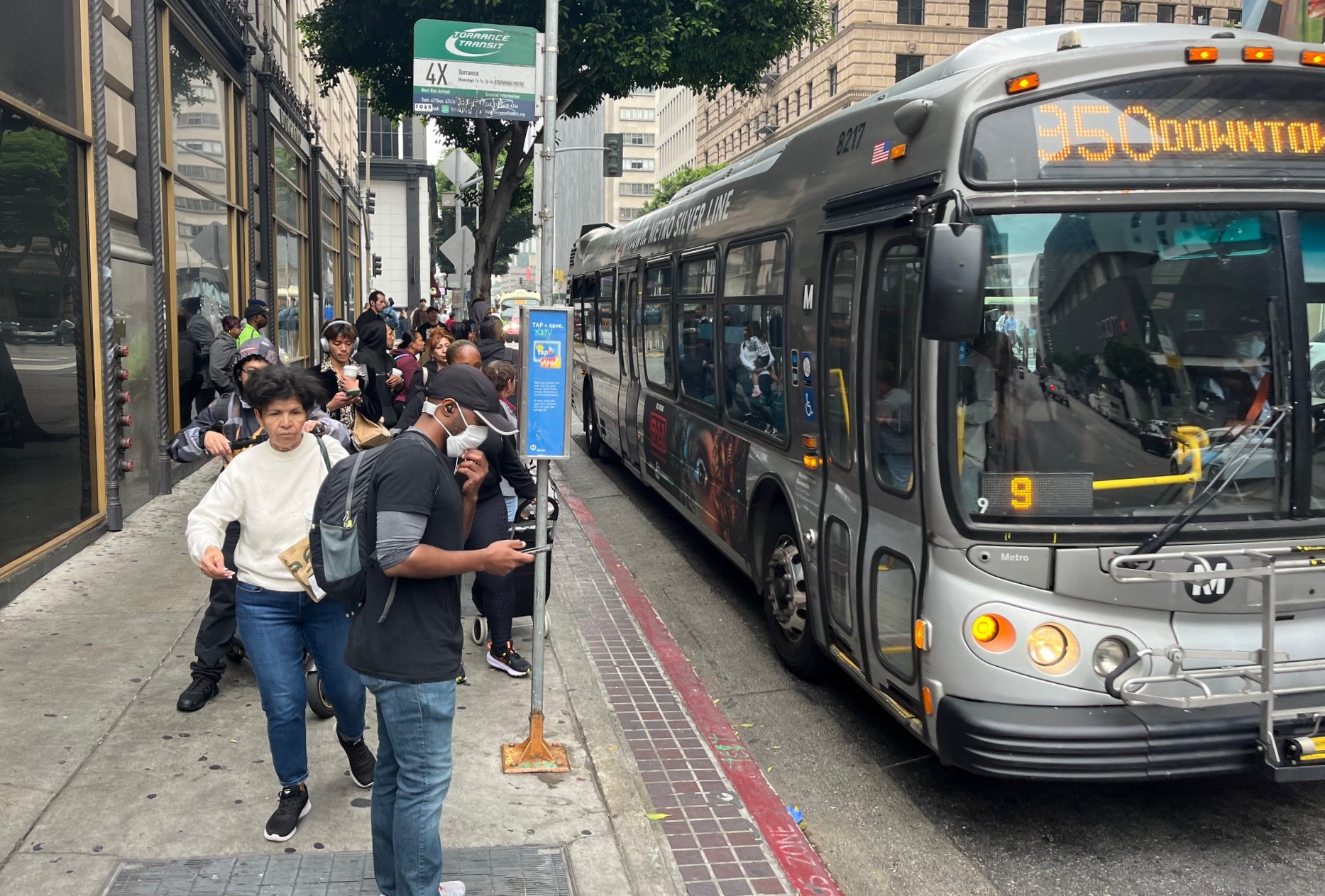
An Engineer from Parsons Explains Mitigation Plans for Where the I-110 Meets Adams Blvd.
When Metro first announced its plans to convert HOV Lanes to variable toll, or HOT Lanes, you would have thought a bomb went off. Newspapers panned the idea, and politicians from the San Gabriel Valley were so worried about "charging people for lanes they already paid for" that they got the originally planned pilot program changed so that it didn't include the I-210.
However, Metro has been promised over $210 million from the federal government in exchange for agreeing to pilot congestion pricing on two highways, so the plans to implement tolling on certain lanes on parts of the I-10 and I-110 moved forward.
After attending a meeting in South Los Angeles last night, it's hard to imagine anyone would have a problem with Metro's current vision for Congestion Pricing. The watered down proposal, which needs to go into place by December of 2010 to qualify for federal funds, wouldn't remove any cars from the current HOV Lanes. Transit vehicles, three passenger vehicles, hybrids, van pools, and in some places two passenger vehicles will all still ride for free in the converted HOV Lanes. As another sign that Metro is moving away from traditional congestion pricing, they've even dropped the term "HOT Lanes" referring instead to "Fast Lanes" for the converted HOV Lanes.
Unless there is a re-striping of part of the I-10 between I-605 and I-710, there won't be any opportunity to "buy-in" during rush hour on the I-10 and limited ability to "buy-in" on the I-110. Materials handed our during the meeting indicate that the I-110 is almost full in peak hours and cars would only be able to buy-in during limited times when space is available. Fear of angering anyone has led to a program that has no plan to preserve HOV lane capacity during peak hours. Wasn't the reason for this plan to protect the HOV lanes from congestion?
In other words, if you were expecting this proposal to change commuting patterns, you're going to be upset. If you drive your kid to private school or happened to buy the right kind of hybrid to qualify for the state's sticker program five years ago, you're going to be thrilled.
As with all small ideas, Metro promises small rewards. Metro expects to raise $3-$4 million in funds over the first year of the program along the I-110, barely enough to pay for operating costs and $10 million on the I-10. Parsons engineer Darren Henderson also promised a "slight improvement in speed" that would lead to an "incremental improvement" in air quality.
Another cause for concern is how Metro will spend the $210 million that it receives from the federal government. In short, they don't know.
To qualify for the funds, Metro will need the legislature to pass, and the governor to sign, authorizing legislation by October 15. Before the vote in Sacramento, Metro has to pass an expenditure plan. Because there is only one Board Meeting between now and 10/15, Metro only has one month and four days to devise a $210 million expenditure plan.That means the Metro Board will have to pass an expenditure plan at their September 25th Board meeting. The plan will be put together by a committee that hasn't been put together yet. Tick. Tock.
Damien Goodmon, one of four people at the meeting that were neither Metro Staff, Caltrans staff, or me, suggested spending some of those funds to extend the aquaduct down Flower Street to help Phase I of the Expo Light Rail run more smoothly. Staff responded that even though $105 million of those federal dollars will be spent along the I-110 Corridor, it needs to go towards projects that will increase capacity for the Harbor Transit Way. Goodman later grumbled that, "adding buses to Harbor is like adding trains to the Gold Line," implying that capacity isn't the reason people don't use transit facilities along the I-110.
But the handful of locals that showed up last night weren't concerned with hybrid access to the "toll lanes" or how hundreds of millions of dollars would be spent on transit improvements; they were concerned about traffic mitigation on the local streets. After all, if the plan is to bring more cars to the I-110, then where will the traffic goes when the I-110 ends on Adams Blvd.
Metro promised a series of small changes that would divert traffic off Adams Blvd. and local streets and on to Figueroa. If that doesn't work, they promised separate mitigation efforts at interchanges on 23rd and 39th streets. They would prefer to build a large "fly-over" to divert traffic directly to large arterial streets to skip local streets altogether.
Photo: Damien Newton/Flickr




